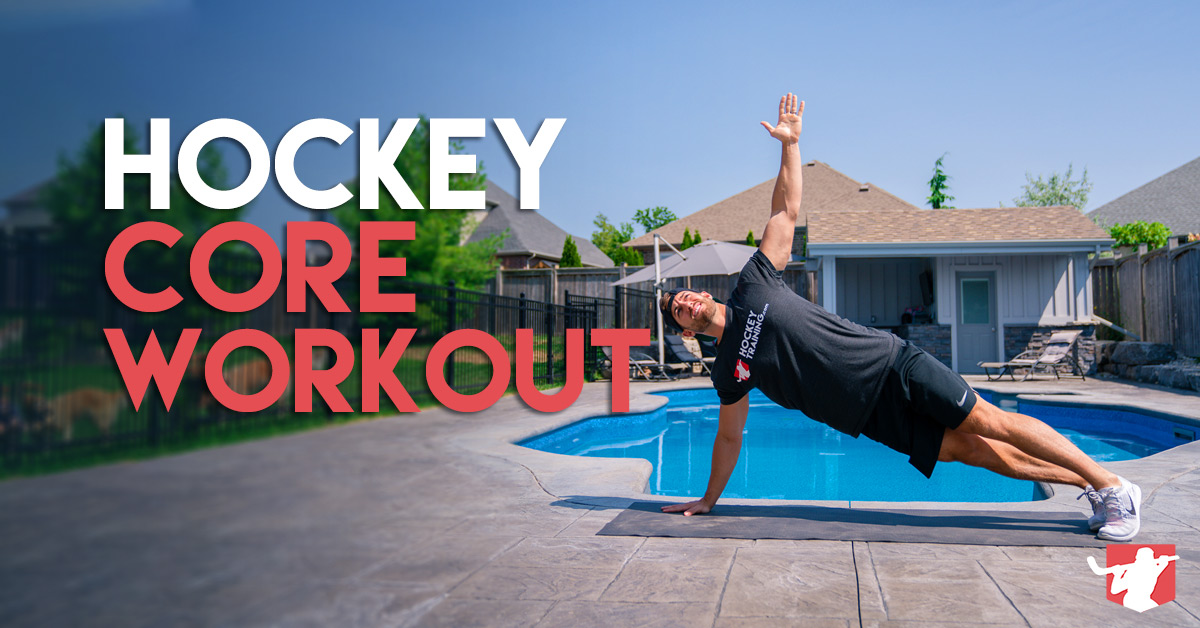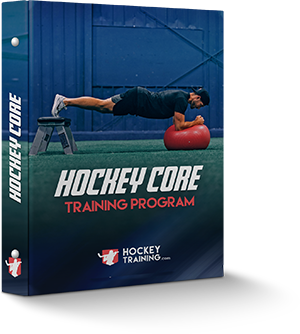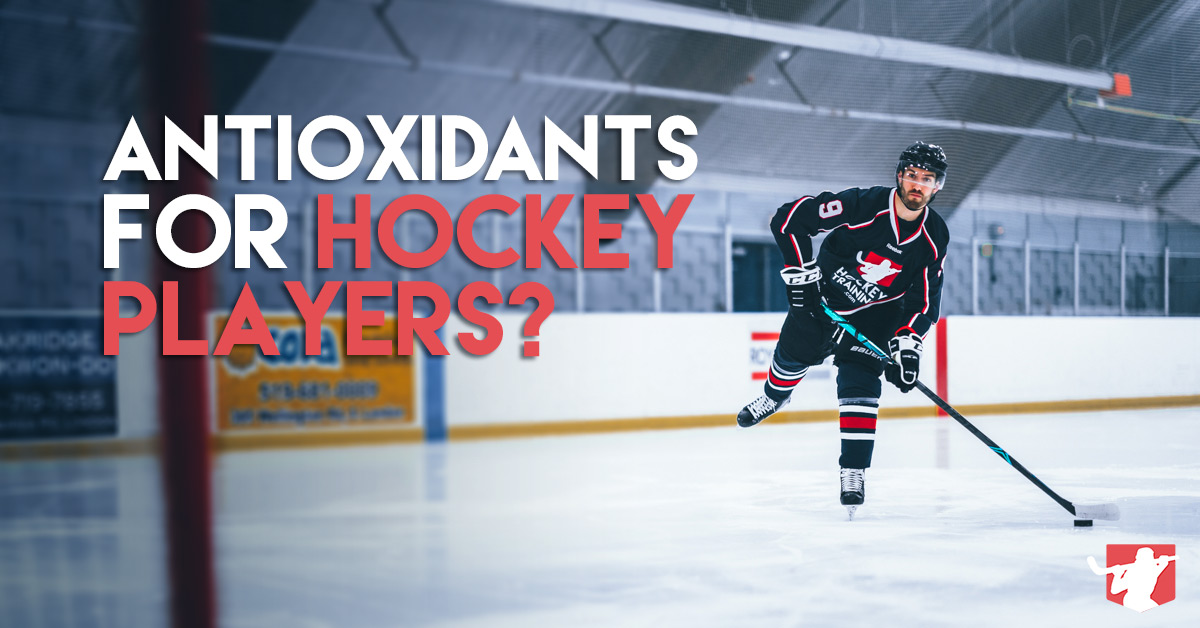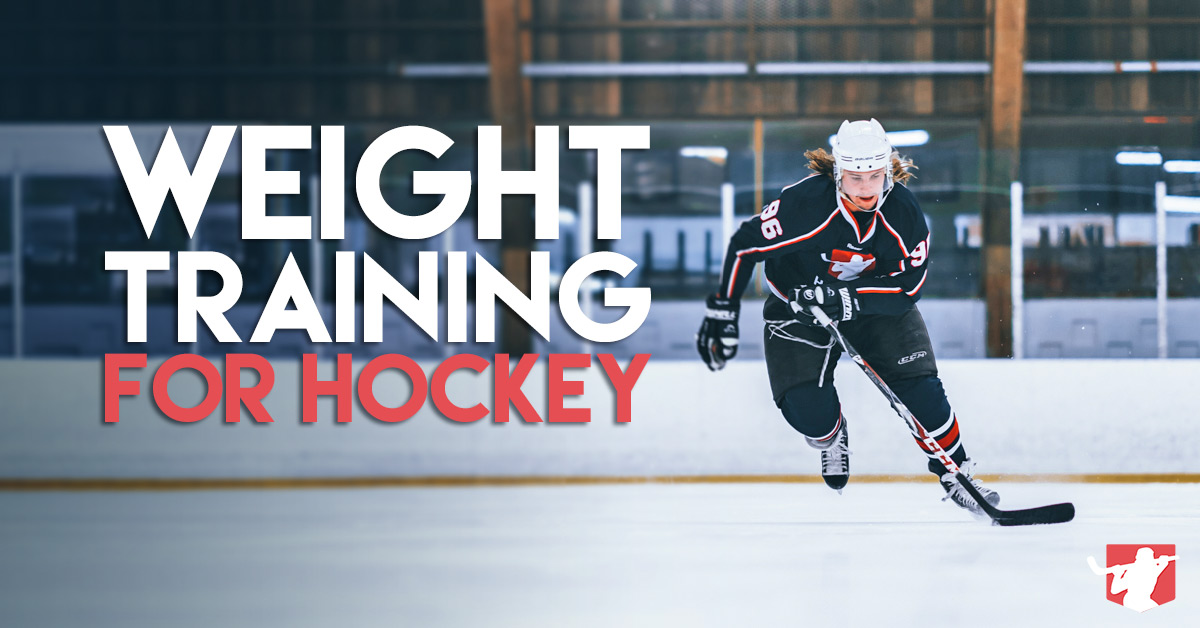In today’s article, I want to run you through a complete core workout that you can use to improve your all-around hockey performance.
I say “all-around” hockey performance because it’s just the truth, there isn’t a single movement out on the ice that you can connect back to optimal core function.
A well-developed core will increase your speed, keep you stronger on the puck, improve your shot power, reduce your risk for injury, and improve your total body power output.
Let’s get into it!
Hockey Core Workout
A1: Alternating Chopper Sit-Ups x 10 per side
A2: Reverse Crunches x 10 reps
A3: Alternating T-Stabs From Plank x 10 per side
A4: Plank With Lower Body Rotations x 30 secs
(Exercise Demonstrations Can Be Found Below)
Rest 10-30 seconds in between each exercise, progressively trying to decrease the time between exercises each week.
Rest 1-3 minutes in between circuits each week, progressively trying to decrease the rest time between circuits each week.
Repeat circuit 2-4x, progressively trying to increase the number of circuits you can perform each week.
*Explanations of this core workout and exercise choices found below.
Complete Hockey Core Development
In order to develop a complete core for all-around hockey performance, you need to target these four pathways of training:
- Anterior core training
- Lateral core training
- Rotational core training
- Posterior core training
Hitting all four of these is crucial so that you build a core that is truly conducive to hockey performance and not just a core that looks good on the beach.
This is where most athletes and coaches get it wrong in two different ways:
#1: They only ever train 1 or 2 of these in their program design
or…
#2: They think that training your abs “isn’t functional”
Both of the above are major mistakes to make in your coaching thought process.
For example, some people think that doing the basic compound movements in enough core stimulation already.
Wrong.
We know from direct research that movements like the squat and deadlift are great for training your lateral and posterior core, but are terrible exercises for training your rotational and anterior core.
Furthermore, to suggest a muscle group “isn’t functional” on the body is so absurd I wouldn’t even know where to start. Why would your body ever have a muscle that isn’t functional!?
It simply doesn’t make sense, especially when you take into consideration that every muscle in the core performs its own unique function as well as stabilizes the unique functions of the other core musculature (allowing them to do their job better).
Complete core development is what we are after, and complete development never exists in the presence of over-emphasizing any one single muscle/movement system.
Let’s break each one down and talk a little bit about the “why” behind this core circuit training.
Alternating Chopper Sit-Ups
Alternating chopper sit-ups are a great “combination exercise” that targets the anterior core, lateral core, and rotational core muscles all-in-one shot.
I like to put it first in the circuit because it’s very demanding, so performing this last could result in a technical breakdown which is the last thing we want.
The anterior core primarily trains your rectus abdominis, which is great for injury prevention and something known as “core stiffness” which aids in the improvement of your shot power.
The lateral core represents the muscle groups responsible for lateral flexion and anti-lateral flexion (think standing upright and then leaning your upper body directly sideways).
In hockey, this lateral flexion/anti-lateral flexion strength makes you much harder to knock off the puck and helps you win those puck battles in the corner.
Lastly, the alternating chopper sit-up, due to the rotational twist at the top, helps train the rotational core as well which translates into better speed, conditioning, and shot power out on the ice.
Your upper and lower body very much rotate during skating (think about how your body naturally uses cross-body arm pumping while you’re skating) and this rotational power output ability is limited by the power output your core can express.
Furthermore, a slap shot is very rotational in function as both the wind-up and the follow-through involve a total body rotation.
Needless to say, we are starting this core circuit off with a bang and hitting many different aspects that can improve your game.
Reverse Crunches
You have likely seen the reverse crunch before as it is one of the core movements you first learn when beginning the train your body for hockey performance, but, this doesn’t make it “basic” by any means.
The reverse crunch, when performed properly in the context of a core circuit is still an incredibly difficult exercise to perform a lot of reps with good technique.
And although beneficial, it is quite limited in its ability to target multiple aspects of core training and instead is primarily an anterior core training exercise.
The reason why it is incorporated within this circuit is because of its effective ability to train the lower abdominals, something that the alternating chopper sit-up does not do very well.
At this point, between these two exercises, we have now trained the upper and lower abdominals as well as all of the muscle groups that take part in lateral and rotational core movements.
Alternating T-Stabs From Plank
This is one of my favorite exercises to include in a hockey core circuit because it combines lateral core training, rotational core training, and posterior core training all into one — but, also adds in an extreme stability component to it at the same time.
This added stability training stimulus is important to have in any core training program as it improves your balance out on the ice but is also arguably the number 1 thing you can do to help prevent injuries.
A lack of stability puts you in a vulnerable position in any environment, let alone in a sport as high-impact as hockey.
Although the concept of stability and balance goes much deeper than just core training (see here for a complete review), incorporating this type of work into your core training is still highly beneficial.
Additionally, the chopper sit-up had you rotate internally whereas the t-stab is having you rotate externally — targeting completely different aspects of rotational core training as these muscles both accelerate and decelerate each other’s functions.
Plank With Lower Body Rotations
To finish this hockey core circuit off, we’re going to bang out some planks with lower body rotations.
As you may have guessed from reviewing the above differences between internal/external rotations in the choppers and t-stabs, the primary inclusion of this exercise was to create a more well-rounded rotational effect as the t-stabs and choppers both rotate the upper body — whereas this exercise exclusively rotates the lower body.
Again, creating a much more well-rounded training stimulus for complete hockey core training development while simultaneously adding in another stability component due to the need of holding the plank for the duration of your set.
The core’s primary function is to stabilize the hips and spine during movement, the more and more we incorporate both stability and movement into the same session, the stronger and stronger our core will become during a hockey game where it is forced to both stabilize (keep you strong on the puck) and contract/rotate (shoot, skate, or bodycheck) at the same time.
Final Thoughts
As you can see, there is a lot more thought that goes into program design than meets the eye.
Most people oversimplify things and think “if my core hurts, I must be doing something right with my training”
Maybe, but maybe that “something right” only targets one or two aspects of core training, and also doesn’t balance out the training stimulus of the accelerating and decelerating muscles that drive hockey performance.
Hockey Core Training Program
To have supreme confidence in your hockey core training, check out the complete Hockey Core Workout Program that I created to take your game to the next level!











How many times per week is the core workout recommended ?
The core can be trained anywhere from 1-3x per week, but, I don’t really recommend repeating the same one multiple times over. You want to switch it up to get more complete development — Add in some core workouts from our YouTube channel or check out the core specific hockey program here: https://www.hockeytraining.com/core-program